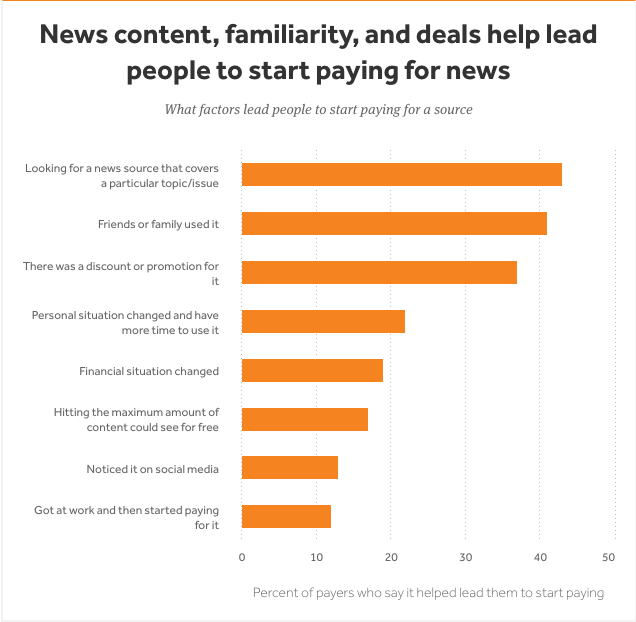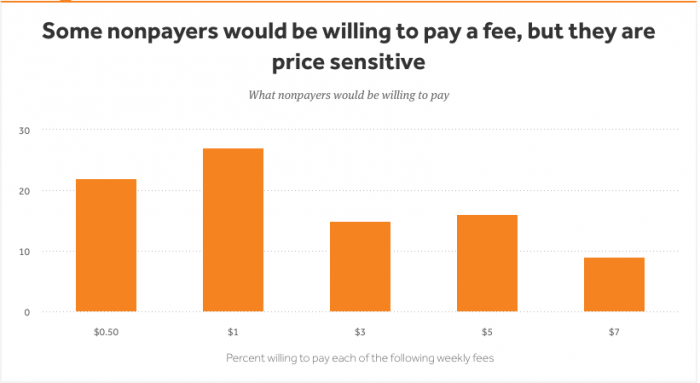The future of the news industry seems increasingly hinged on a central question: How do news organizations get more people to pay for the news that they consume?
To answer that question, the industry also needs to get a better sense of what drives those who already do pay. A new, exhaustive survey from the Media Insight Project (a collaboration between the American Press Institute and the Associated Press-NORC Center for Public Affairs Research) offers plenty of insight into payers and nonpayers — and the differences between the two groups.
Here are a few standout findings:
— There are few surprises in why people pay for news. News organizations trying to convince people to pay must first start by creating something worth paying for — which is to say, something differentiated, focused, and high quality. More than 4 in 10 subscribers said that they paid for a publication because it “excels at covering certain topics about which they particularly care.” The Media Insight Project said that while current economic challenges may be encouraging news organizations to cut back, subscribers are increasingly rewarding publications that invest more resources into high quality content.
Other reasons people pay? More than 4 in 10 said it was because friends or family members subscribe to the publication. Oh, and don’t ignore the power of the discount: At 37 percent, spotting a discount or promotion was the third-largest motivation for people to pay up. That’s one area where digital publications can learn from their print counterparts. Another highlight: Young people in particular are more likely pay because they support a publication’s mission.

— A lot of people don’t pay for news because there’s plenty of free stuff online. This rationale, cited by half of nonpayers, shouldn’t shock anyone in the industry — it’s hard to compete with free, after all. Others (41 percent) said that they don’t pay for news because they don’t care enough about it, and a smaller number (24 percent) said that news is too expensive. Just 15 percent of nonpayers said they didn’t pay because they don’t trust what they read from news sources.
— Paywalls work, but only to a degree. Many publications have leaned on paywalls to help turn habitual readers into paying subscribers. But turns out that that there’s a limit to how effective the tactic is: Roughly 17 percent of payers cited paywalls as the the factor that pushed them to subscribe. The Media Insight Project said that paywalls are most effective when they’re combined “with other considerations of ‘value,’ including frequent engagement, quality content, and more.”
Another number worth pointing out: 17 percent of people said they don’t pay for news because of the ease at which they can get around paywalls from the likes of The Wall Street Journal.

— News organizations should target nonpaying “news seekers.” It turns out that, in terms of consumption, people who don’t pay for news look a lot like those that do. The Media Insight Project said that understanding these nonpaying news seekers should be a core part of publishers’ growth strategies going forward.
— There’s a lot of price sensitivity among nonpayers. Researchers asked people if they would be willing to pay for a current news source that cost 50¢, $1, $3, or $7 a week. While a quarter of nonpayers said they would be willing to pay 50¢ or $1, just 15 percent would do so if the publication cost $3 or more. That’s more evidence that, when it comes to crafting a pricing strategy, most news publications face an uphill battle if the value proposition isn’t there.
